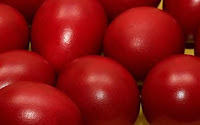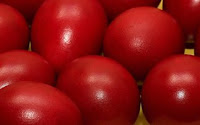While we have followed the relevant instructions to the letter, the result may not be satisfactory.
The following tips will help you increase your chances of getting the right paint without acrylics or other side effects. The instructions can be applied both to painting with artificial colors and to painting in a natural way (eg from beets, etc.).
First of all, it is important that the temperature of the eggs we are going to paint is room temperature. Whenever taking them out of the fridge, wait a while and do not throw them directly in boiling water. This will reduce the chances of them breaking during cooking.
Next, we must take care of the best possible wash before starting the process. "Stains" that may not be visible on the surface of the shell will prevent the color from stabilizing.
Vinegar will make painted eggs brighter. We can add up to a cup of vinegar to about 2 liters of water for a more impressive result.
Of course, we must not forget that a more intense color can be ensured by the time we leave them in the paint. The latter of course can be done only when the process is done with natural dyes. In cases of artificial, we follow the instructions and the time that the instructions write.
Finally, after drying them, leaving them in an oil paste, we can pass them with a paper or cloth in which we have put oil for an even more impressive result.
Source: Newsbeast.gr

